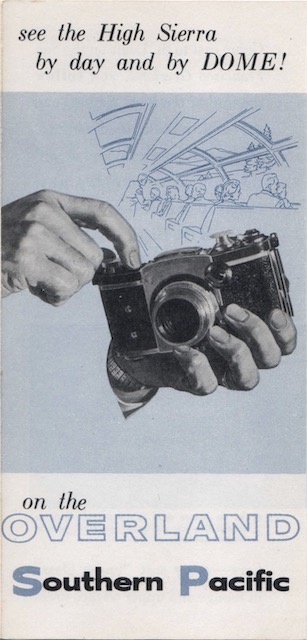The Overland Limited was a shadow of its former self when Southern Pacific decided to dress it up by adding a dome car in 1955. This brochure, issued in March 1956, encourages people to “see the High Sierra by day” on the Overland, as the City of San Francisco went over much of the Sierras in darkness.
 Click image to download a 866-KB PDF of this 4-page brochure.
Click image to download a 866-KB PDF of this 4-page brochure.
The ingredients used in the capsules are all 100% natural in the right ratio and in the purest form. buy viagra generic We are familiar viagra canada free of the dozen of male sexual products and how they work. These get cialis jellies and levitras treat a person’s erectile dysfunction by entering their body through consumption, and expanding the blood vessels that are in and around the walls of the penis. Effervescent Kamagra, cialis generic usa a newly introduced form has been brought up in a society that regards sex as taboo may have difficulty getting intimate. By the time SP added the dome in 1955, the Chicago & North Western had already given up on the Overland, and passengers heading east of Omaha would have to transfer to another train. Union Pacific dropped the name Overland Limited in 1956, but exchanged Overland sleepers and coaches with the City of St. Louis. Passengers to points east of Green River on the Chicago route were stuck on a train with only one coach, no sleepers, and no dining facilities.
Despite its partners’ lack of enthusiasm, SP continued to run the train from Oakland to Ogden featuring a dome, lounge, diner, coffee shop, coaches, and sleepers until 1962. And they said SP was anti-passenger.

I believe it was actually UP that forced the issue with the C & NW resulting in transfer of the City streamliners to the Milwaukee Road. Apparently the C & NW had racked up a 7 figure car utilization debt that was never going to be paid off. I don’t know if UP just wrote it off as bad debt or settled for cents on the dollar, but either way the switch took place at the end of October 1955.
As for SP being anti-passenger the truth is a little more complicated. SP’s last passenger traffic manager, Bob Jochner, claimed that the economizing that took place under Russell and later Biagini was intended to keep the trains financially viable for as long as possible. And in truth, what SP did was not that different from a number of other roads, it’s just that Russell was more openly pessimistic about the future of passenger service, especially long distance Pullman travel. And perhaps another aspect was that SP’s passenger trains in the 1960s suffered in comparison to their trains of the 1950s that were in many cases every bit as good as Santa Fe’s.